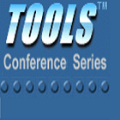The introduction of automated vehicles has redefined the level of interaction between the driver and the vehicle, introducing new tasks and so impose different workloads. Existing tools such as NASA-TLX and DALI are still used to assess driving workload in automated vehicles, despite not accounting for new tasks. This study introduces AV-TLX, a specialized tool for measuring workload in Level 3 automated driving. The development process began with a narrative literature review to identify the primary factors influencing workload. This was followed by a series of qualitative sessions during which the dimensions and later the questions of the questionnaire were designed. The tools validity was first assessed using CVR and CVI indices, and its reliability and convergent validity were evaluated using a dynamic driving simulator with high fidelity. The final version of AV-TLX comprises 19 questions across 8 subscales, demonstrating excellent reliability (0.86) and validity (CVR > 0.78). An agreement scores between the results of AV-TLX and NASA-TLX in the simulation study was 0.6, which is considered acceptable for the consistency of two questionnaires. Furthermore, this questionnaire can be utilized in two ways. First by reporting the overall workload and/or divided into 8 primary subscales, or by categorizing the questions into two groups including takeover task workload and automated driving task workload. The final version of this questionnaire, as presented in the paper, is available for use in future studies focusing on Level 3 automated driving.
翻译:暂无翻译




